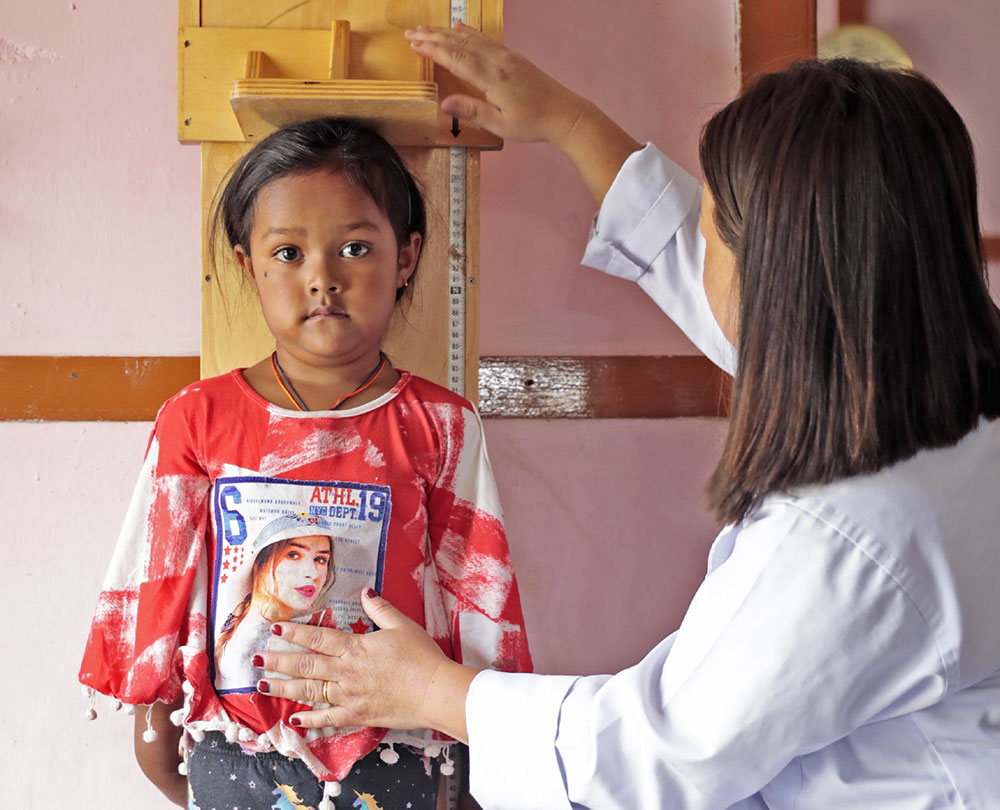Lhakpa Quendren
Tshering, a corporate employee in Thimphu, has been following a strict diet of whole foods and reduced carbs since he was diagnosed to be prediabetic at 38 years.
The father of three, belongs to a generation of Bhutanese population who studied in boarding schools and were more often than not, always hungry. Since his teenage years, he developed a strong hunger for food.
However, bound to the chair at work for more than 10 hours a day and lack of physical exercise has made him put on weight.
In one lifetime, Tshering has attained all three stages of what health officials term as the triple burden of malnutrition.
The term ‘triple burden of malnutrition’ refers to the coexistence of undernutrition (stunting and wasting), micronutrient deficiencies (often termed hidden hunger), and overnutrition (overweight and obesity).
While Tshering’s access to nutritious food was limited as resources were scarce then, his children are today spoilt for choice as they indulge excessively in fast food.
Both Tshering and his children could be deficient in micronutrients and likely to become overweight.
The issue of nutrition security is spread across all sections of the society.
While with economic development and changing lifestyles, vulnerable populations, including women and children, face greater barriers to accessing nutritious foods, healthcare services, and education regarding healthy eating habits, residents in rural areas as opposed to many in the urban centres cannot afford or have access to a balanced diet.
According to Bhutan Living Standard Survey 2022, more than 1.2 percent of the households reported food insufficiency less than 10 times, and 0.3 percent indicated experiencing food insufficiency in the last 12 months of the survey.
The survey showed that about 34 percent of the households who experienced food insufficiency indicated they didn’t go a whole day and night without having any food while less than one-tenth (9.5 percent) of the households indicated they had experienced it often (at least 10 times or more).
“We cannot afford nutritious food due to the high cost, and so we buy cheaper imported produce despite being aware that they may not be as healthy,” said Amrita Rai, a 35-year-old mother in Kholmay, Sarpang.
Several factors, including changing dietary patterns, urbanisation, food insecurity, socioeconomic factors, and inequitable access to healthcare services, among others, hinder efforts to address the triple burden of malnutrition effectively.
Healthcare workers say that the transition towards high-fat, high-sugar, and low-nutrient diets heightens the risk of obesity, diabetes, and other diet-related non-communicable diseases.
“The traditional diets are being replaced by more processed and energy-dense foods with the changes in lifestyle and dietary habits,” said a healthcare worker. “The lack of physical activity is also contributing to an increase in obesity and related health issues.”
Gelephu Mangmi Sonam Dakpa said that urban areas often lack access to fresh and nutritious foods, while processed and fast food become more prevalent. He added that changing dietary habits in rural areas despite health awareness remains a challenge.
“Access to quality nutrition interventions, as well as the lack of human resources remains a challenge in rural and remote areas,” another official said.
The prevalence of acute malnutrition (wasting) stands at 4.3 percent at the national level with the highest rates of acute malnutrition being found in the poorest section (7 percent) in the society according to the National Nutrition Strategy and Action Plan 2021-2025.
A joint study ‘A Situation Analysis of Children, Youth and Women in Bhutan 2012’ highlights that newborn malnourishment often results from a lack of exclusive breastfeeding. The 2015 National Nutrition Survey, carried out by the Ministry of Health and UNICEF, reported an exclusive breastfeeding rate of just 51.4 percent.
The results from the National Nutrition Survey 2015 show that the child stunting prevalence still stands at 21.2 percent. Although stunting has dropped from 33.5 percent in 2010, regional disparities remain persistently elevated with 29.1 percent prevalence rate in the eastern region followed by 18.5 percent and 16.2 percent in the central and western region respectively.
The survey revealed higher rates of stunting in the eastern region, with 29.1 percent of children aged 0-59 months affected, compared to the national average of 21.2 percent. Additionally, rural areas showed a higher prevalence of stunting at 26.1 percent, contrasting with 16 percent in urban areas.
Health officials said there is a need to conduct studies to understand why stunting and wasting are most prevalent in the eastern region.
“To address these challenges, the government, and the health ministry, must enhance existing mother and child health programs and explore avenues to provide financial and social support to families in need,” said the official.
While the incidence of stunting and wasting has decreased in the country, there is a lack of dedicated studies examining the factors associated with stunting and wasting among children.
“The data analysis and its results can be used as a tool to deepen our understanding of the causes of child stunting. It would further provide valuable information for future healthcare strategies and interventions,” said a health official.
According to the draft 13th Plan, the government targets to implement evidence-based nutrition-specific and nutrition-sensitive interventions.
Local leaders call for the need of a comprehensive, multisectoral approach to address emerging challenges, integrating nutrition-sensitive interventions and tackling socioeconomic inequalities to ensure equitable access to nutritious foods.
According to the global nutrition report, Bhutan is progressing on two maternal, infant, and young child nutrition targets, but anemia rates among reproductive-aged women remain unchanged, affecting 38.6 percent of women aged 15 to 49 years.
In partnership with UNICEF, Kuensel will publish a series of sto- ries on children’s and young people’s issues as part of the new Country Programme Cycle and emerging priorities.


